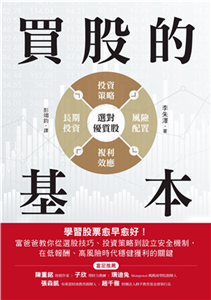Project Finance In Construction - A Structured Guide To Assessment
商品資訊
ISBN13:9781444334777
出版社:John Wiley & Sons Inc
作者:Merna
出版日:2010/07/23
裝訂/頁數:平裝/192頁
商品簡介
作者簡介
名人/編輯推薦
目次
相關商品
商品簡介
Project finance has spread worldwide and includes numerous industrial projects from power stations and waste-disposal plants to telecommunication facilities, bridges, tunnels, railway networks, and now also the building of hospitals, education facilities, government accommodation and tourist facilities.
Despite financial assessment of PF projects being fundamental to the lender’s decision, there is little understanding of how the use of finance is perceived by individual stakeholders; why and how a financial assessment is performed; who should be involved; where and when it should be performed; what data should be used; and how financial assessments should be presented.
Current uncertainty in financial markets makes many sponsors of construction project financings carefully consider bank liquidity, the higher cost of finance, and general uncertainty for demand. This has resulted in the postponement of a number of projects in certain industry sectors. Governments have seen tax receipts drastically reduced which has affected their ability to finance infrastructure projects, often irrespective of the perceived demand. Equity providers still seek to invest, however there are less opportunities due to market dislocation. Due to the demand for global infrastructure it is believed that project financings will return to their pre-crunch levels, or more so, however lenders’ liquidity costs will be passed on to the borrowers. Lenders will also be under stricter regulation both internally and externally.
The steps outlined in the guide are designed to provide a basic understanding for all those involved or interested in both structuring and assessing project financings. Secondary contracts involving constructors, operators, finance providers, suppliers and offtakers can be developed and assessed to determine their commercial viability over a projects life cycle.
Special Features
a structured guide to assessing the commercial viability of construction projects
explains economic metrics to use in the decision making process
detailed case study shows how stakeholders apply the concept of project finance
Despite financial assessment of PF projects being fundamental to the lender’s decision, there is little understanding of how the use of finance is perceived by individual stakeholders; why and how a financial assessment is performed; who should be involved; where and when it should be performed; what data should be used; and how financial assessments should be presented.
Current uncertainty in financial markets makes many sponsors of construction project financings carefully consider bank liquidity, the higher cost of finance, and general uncertainty for demand. This has resulted in the postponement of a number of projects in certain industry sectors. Governments have seen tax receipts drastically reduced which has affected their ability to finance infrastructure projects, often irrespective of the perceived demand. Equity providers still seek to invest, however there are less opportunities due to market dislocation. Due to the demand for global infrastructure it is believed that project financings will return to their pre-crunch levels, or more so, however lenders’ liquidity costs will be passed on to the borrowers. Lenders will also be under stricter regulation both internally and externally.
The steps outlined in the guide are designed to provide a basic understanding for all those involved or interested in both structuring and assessing project financings. Secondary contracts involving constructors, operators, finance providers, suppliers and offtakers can be developed and assessed to determine their commercial viability over a projects life cycle.
Special Features
a structured guide to assessing the commercial viability of construction projects
explains economic metrics to use in the decision making process
detailed case study shows how stakeholders apply the concept of project finance
作者簡介
Anthony Merna is senior partner of Oriel Group Practice, a multidisciplinary research and consultancy practice based in Manchester and a visiting lecturer to Manchester Business School at the University of Manchester. He has been teaching Project Finance for the last 14 years to a number of UK and overseas universities, businesses and government agencies.
Yang Chu is a graduate of the School of Mechanical, Aerospace and Civil Engineering at the University of Manchester and a research consultant with Oriel Group Practice specialising in the areas of project finance and risk modelling. He is currently carrying out risk management research at Manchester Business School.
Faisal Al-Thani is Senior Development Manager, Middle East for Maersk Oil based in Doha and a board member of the Marsh International Risk Council.
Yang Chu is a graduate of the School of Mechanical, Aerospace and Civil Engineering at the University of Manchester and a research consultant with Oriel Group Practice specialising in the areas of project finance and risk modelling. He is currently carrying out risk management research at Manchester Business School.
Faisal Al-Thani is Senior Development Manager, Middle East for Maersk Oil based in Doha and a board member of the Marsh International Risk Council.
名人/編輯推薦
"This guide is for project managers, students, and academics involved in structuring and assessing project finance." (Book News Inc, November 2010)
目次
List of illustrations.
List of tables.
About the Authors.
Preface.
1 Introduction.
1.1 The development of project finance.
1.2 Financial assessment.
What is financial assessment?
Why perform a financial assessment?
Who is involved in the risk assessment process?
Where should a financial assessment be performed?
When should a financial assessment be performed?
What data are to be used?
How should assessment outputs be presented?
1.3 Purpose of this guide.
1.4 Scope of the guide.
2 Project finance.
2.1 Introduction.
2.2 Definition of project finance.
2.3 The key characteristics of project finance.
Special project/purpose vehicle.
Contractual arrangement.
Non-/limited recourse.
Off-balance sheet transaction.
Robust income stream of the project as the basis for financing.
2.4 Legal and financial considerations in project finance.
Legal.
Financial.
3 Financial instruments and cash flow modelling.
3.1 Introduction.
3.2 Debt finance.
Senior debt.
3.3 Mezzanine finance.
Subordinate debt.
Bond finance.
3.4 Equity finance.
3.5 Sources of debt and equity.
3.6 Cash flow modelling and project financing.
4 Risk management.
4.1 Introduction.
4.2 Risk.
4.3 Risk management process.
Risk identification.
Risk analysis.
Risk response.
4.4 Typical risks in project financing.
5 The financial assessment process.
5.1 Introduction.
5.2 The financial assessment structure.
SPV assessment.
Lenders' assessment.
SPV and lender final assessment.
6 Case study.
6.1 Introduction.
6.2 Independent power project.
6.3 Supply and offtake contracts.
Supply contracts.
Offtake contracts.
Applications of supply and offtake contracts.
6.4 Assumptions for initial assessment.
7 Developing the base case model.
7.1 Introduction.
7.2 SPV’s initial assessment.
7.3 Identify the estimated activities, time, costs and revenues of the project.
7.4 Development of the base case model.
7.5 Identify major project risks.
7.6 Assessment of base case model incorporating risks.
8 Initial economic assessment by lenders.
8.1 Introduction.
8.2 Financial package assessment.
Finance package (1).
Finance package (2).
Finance package (3).
8.3 Conclusions.
9 Financial engineering.
9.1 Introduction.
9.2 Financial instruments used in financial engineering.
Forward rates.
Financial futures.
Swaps.
Options.
Caps, floors, collars, swaptions and compound options.
Asset-backed securities.
9.3 Refinancing.
9.4 Reappraising public–private partnerships.
9.5 Techniques applied in the reappraisal of PPP concession agreement.
9.6 Other financial engineering techniques.
10 Final assessment to determine project commercial viability.
10.1 Introduction.
10.2 Detailed risk assessment.
10.3 Financial engineering.
Tax holiday.
Financial collar.
Extending the concession.
Increasing debt.
Grace period.
Phasing construction and operation.
Upfront payments.
Existing concession revenues.
10.4 Summary.
11 Financial close.
11.1 Introduction.
11.2 Due diligence.
Technical.
Legal due diligence.
Trigger step in rights.
Model audit and sensitivity analysis.
Risk valuation.
Term sheet.
Inter-creditor agreement.
Hedge strategy.
Letters of credit.
Reserve account.
Escrow and ring-fenced facilities.
Economic indicators.
Taxation.
Insurance.
11.3 Financial close.
Credit committee approval process.
Due diligence report.
Technical closure.
Financial close.
Technical commencement.
Execute interest rate swaps.
12 Islamic finance and project finance.
12.1 Introduction.
12.2 Islamic finance.
12.3 Shariah.
Qiyas and Litihad.
12.4 Core principles of Islamic finance.
Sharing (profit/loss and risk).
No unfair gain.
No speculation.
No uncertainty.
No investments that are not in the public interest.
No hoarding of money.
Deception.
Islamic financial institutions.
Shariah supervisory boards.
12.5 Project finance.
The Ijara principle.
Ijara Mawsufah Fi Al Dhimmah (forward lease).
Istisna'a.
Sukuk.
Sukuk al Istisna'a.
A typical SAI deal.
Hedging.
Swaps.
12.6 Other Islamic finance techniques for projects.
Musharaka (equity financing).
Bai salam (forward financing).
12.7 Risks and liabilities.
12.8 Summary.
13 Conclusions and recommendations.
13.1 Review.
13.2 Conclusions.
13.3 Recommendations.
Appendix.
Glossary.
References.
Index.
List of tables.
About the Authors.
Preface.
1 Introduction.
1.1 The development of project finance.
1.2 Financial assessment.
What is financial assessment?
Why perform a financial assessment?
Who is involved in the risk assessment process?
Where should a financial assessment be performed?
When should a financial assessment be performed?
What data are to be used?
How should assessment outputs be presented?
1.3 Purpose of this guide.
1.4 Scope of the guide.
2 Project finance.
2.1 Introduction.
2.2 Definition of project finance.
2.3 The key characteristics of project finance.
Special project/purpose vehicle.
Contractual arrangement.
Non-/limited recourse.
Off-balance sheet transaction.
Robust income stream of the project as the basis for financing.
2.4 Legal and financial considerations in project finance.
Legal.
Financial.
3 Financial instruments and cash flow modelling.
3.1 Introduction.
3.2 Debt finance.
Senior debt.
3.3 Mezzanine finance.
Subordinate debt.
Bond finance.
3.4 Equity finance.
3.5 Sources of debt and equity.
3.6 Cash flow modelling and project financing.
4 Risk management.
4.1 Introduction.
4.2 Risk.
4.3 Risk management process.
Risk identification.
Risk analysis.
Risk response.
4.4 Typical risks in project financing.
5 The financial assessment process.
5.1 Introduction.
5.2 The financial assessment structure.
SPV assessment.
Lenders' assessment.
SPV and lender final assessment.
6 Case study.
6.1 Introduction.
6.2 Independent power project.
6.3 Supply and offtake contracts.
Supply contracts.
Offtake contracts.
Applications of supply and offtake contracts.
6.4 Assumptions for initial assessment.
7 Developing the base case model.
7.1 Introduction.
7.2 SPV’s initial assessment.
7.3 Identify the estimated activities, time, costs and revenues of the project.
7.4 Development of the base case model.
7.5 Identify major project risks.
7.6 Assessment of base case model incorporating risks.
8 Initial economic assessment by lenders.
8.1 Introduction.
8.2 Financial package assessment.
Finance package (1).
Finance package (2).
Finance package (3).
8.3 Conclusions.
9 Financial engineering.
9.1 Introduction.
9.2 Financial instruments used in financial engineering.
Forward rates.
Financial futures.
Swaps.
Options.
Caps, floors, collars, swaptions and compound options.
Asset-backed securities.
9.3 Refinancing.
9.4 Reappraising public–private partnerships.
9.5 Techniques applied in the reappraisal of PPP concession agreement.
9.6 Other financial engineering techniques.
10 Final assessment to determine project commercial viability.
10.1 Introduction.
10.2 Detailed risk assessment.
10.3 Financial engineering.
Tax holiday.
Financial collar.
Extending the concession.
Increasing debt.
Grace period.
Phasing construction and operation.
Upfront payments.
Existing concession revenues.
10.4 Summary.
11 Financial close.
11.1 Introduction.
11.2 Due diligence.
Technical.
Legal due diligence.
Trigger step in rights.
Model audit and sensitivity analysis.
Risk valuation.
Term sheet.
Inter-creditor agreement.
Hedge strategy.
Letters of credit.
Reserve account.
Escrow and ring-fenced facilities.
Economic indicators.
Taxation.
Insurance.
11.3 Financial close.
Credit committee approval process.
Due diligence report.
Technical closure.
Financial close.
Technical commencement.
Execute interest rate swaps.
12 Islamic finance and project finance.
12.1 Introduction.
12.2 Islamic finance.
12.3 Shariah.
Qiyas and Litihad.
12.4 Core principles of Islamic finance.
Sharing (profit/loss and risk).
No unfair gain.
No speculation.
No uncertainty.
No investments that are not in the public interest.
No hoarding of money.
Deception.
Islamic financial institutions.
Shariah supervisory boards.
12.5 Project finance.
The Ijara principle.
Ijara Mawsufah Fi Al Dhimmah (forward lease).
Istisna'a.
Sukuk.
Sukuk al Istisna'a.
A typical SAI deal.
Hedging.
Swaps.
12.6 Other Islamic finance techniques for projects.
Musharaka (equity financing).
Bai salam (forward financing).
12.7 Risks and liabilities.
12.8 Summary.
13 Conclusions and recommendations.
13.1 Review.
13.2 Conclusions.
13.3 Recommendations.
Appendix.
Glossary.
References.
Index.
主題書展
更多
主題書展
更多書展今日66折
您曾經瀏覽過的商品
購物須知
外文書商品之書封,為出版社提供之樣本。實際出貨商品,以出版社所提供之現有版本為主。部份書籍,因出版社供應狀況特殊,匯率將依實際狀況做調整。
無庫存之商品,在您完成訂單程序之後,將以空運的方式為你下單調貨。為了縮短等待的時間,建議您將外文書與其他商品分開下單,以獲得最快的取貨速度,平均調貨時間為1~2個月。
為了保護您的權益,「三民網路書店」提供會員七日商品鑑賞期(收到商品為起始日)。
若要辦理退貨,請在商品鑑賞期內寄回,且商品必須是全新狀態與完整包裝(商品、附件、發票、隨貨贈品等)否則恕不接受退貨。
























